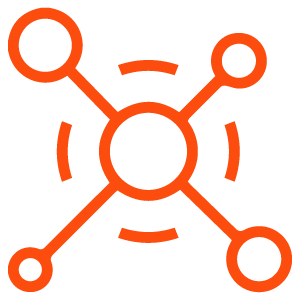#Business #Card #Creative #Corporate #Print #Designs #Stand
In an age dominated by digital communication, it may seem counterintuitive to invest in print media, particularly for corporate branding. However, print design remains an essential aspect of brand identity that can leave a lasting impression. While business cards have long been the staple of professional networking, innovative corporate print designs offer a plethora of ways to communicate a brand’s ethos and values. This article explores creative print design strategies that go beyond the traditional business card, showcasing how they can elevate brand identity and make a memorable impact.
The Importance of Print Design in a Digital World
While online interactions are convenient and often instantaneous, printed materials can evoke a sense of tangibility and authenticity. Print media engages the senses in ways that digital formats cannot replicate — from the texture of high-quality paper to the vibrant colors of print designs. As the saying goes, “What gets printed gets remembered.” In fact, studies show that people retain information better when they encounter it in print form.
Corporate print designs also offer an opportunity to reinforce a brand’s identity. This can be crucial for businesses seeking to differentiate themselves in a saturated market. Logos, colors, typography, and imagery are not merely decorative elements; they work collectively to convey a brand’s message and personality. Therefore, investing in creative print design is no longer just a nice-to-have; it’s an essential strategy for effective branding.
Innovations in Print Design Beyond Business Cards
With the growing importance of effective print design, corporate entities are rethinking their strategies—exploring creative solutions that resonate with their target audiences. Below are some innovative print design ideas that can help businesses stand out.
1. Unique Brochures and Flyers
Rather than the standard tri-fold brochure, companies can experiment with unique shapes, sizes, and folds. Circular brochures, Z-folds, or even pop-up designs can be visually striking and garner more attention than traditional formats. High-quality imagery paired with bold typography and eye-catching colors can create a powerful visual narrative.
Example: A travel agency could use a brochure that unfolds into a map of popular destinations, integrating text and images that guide potential clients through an immersive journey.
2. Custom Packaging
For product-oriented businesses, packaging is often the first physical interaction a customer has with a brand. Companies can use packaging design to tell a story, showcase sustainability efforts, or highlight unique selling propositions. Beyond aesthetics, the packaging should be practical and functional while enhancing the unboxing experience.
Example: A gourmet chocolate brand might use elegant, eco-friendly packaging that includes a spot for personalized messages, turning each box into a keepsake for those who receive it.
3. Posters and Wall Art
Visual elements in office spaces are often overlooked, yet they are powerful in establishing corporate identity. Custom posters and wall art showcasing brand values, mission statements, or motivational quotes can create a vibrant atmosphere that reflects the essence of the company.
Example: A creative agency might adorn its walls with oversized artworks that incorporate project highlights, case studies, or even team snapshots, transforming mundane spaces into inspiring environments.
4. Branded Notebooks and Stationery
Branded stationery, including notebooks, letterheads, and pens, offers an understated yet effective way to promote a corporate identity. Personalizing these items with logos, mission statements, and unique patterns can create a cohesive brand experience. Companies can distribute these items at conferences, meetings, or as gifts, presenting themselves as thoughtful and professional.
Example: An environmental consultancy might produce biodegradable notebooks with stunning designs that reflect their commitment to sustainability.
5. Event Marketing Materials
Events, whether virtual or in-person, provide an opportunity to showcase a brand creatively. From personalized lanyards and badges to imaginative swag bags, event marketing materials can help in making memorable experiences for attendees. The design should merge functionality with creativity, ensuring that these materials are not only useful but also reflect the brand identity.
Example: At a tech expo, a startup could distribute VR headsets with interactive company demos embedded, effectively introducing their products while creating a hands-on experience.
6. Origami Invitations
Invitations offer companies a chance to showcase creativity while effectively communicating important information. An origami invitation, for instance, can be shaped into an object relevant to the event, intriguing recipients and increasing the likelihood of attendance.
Example: A product launch for a toy company could use invitations that can be folded into miniature toy shapes, visually representing what the event will entail.
7. Creative Business Cards
Although this article focuses on going beyond the traditional business card, it is essential to recognize that creativity can still apply within this medium. Unique materials, such as wood, metal, or plastic, can provide an instant tactile experience that distinguishes a card. Integrating technology, like QR codes that link to portfolios or videos, can also add a modern twist.
Example: A designer could create a business card that doubles as a mini portfolio, with images of their work present on each side, seamlessly blending functionality and creativity.
8. Trade Show Displays
Trade shows are an opportunity for companies to market themselves on a big scale. Beyond standard booths, incorporating interactive elements—like augmented reality features, touch screens, or fun gamification—can captivate an audience. Moreover, innovative display structures designed with engaging graphics and logos help draw visitors in.
Example: A fashion brand could create a virtual fitting room experience at their trade show display, allowing attendees to interactively view different outfits in various sizes.
9. Annual Reports and Corporate Literature
Annual reports are not merely documents of financial statistics; they are a chance for companies to tell their story. Utilizing compelling layouts, infographics, and design elements can transform a traditional corporate document into an engaging narrative that captivates stakeholders.
Example: A tech company might incorporate vivid graphics and user testimonials in their annual report to convey both financial success and customer satisfaction, making it visually appealing and informative.
10. Direct Mail Campaigns
Despite the prevalence of digital marketing, direct mail remains a compelling strategy. Unique and creative designs can make direct mail stand out in an increasingly crowded inbox. This includes incorporating elements like embossed logos, eye-catching colors, or even small gifts that prompt recipients to take action.
Example: A skincare company could send samples along with beautifully designed postcards featuring customer testimonials, encouraging recipients to try their products.
The Role of Print in Building Brand Identity
Throughout its evolution, the fundamental purpose of print media in design has been to strengthen brand identity. While businesses might think of branding solely in terms of visual elements like logos, typography, and color schemes, print design offers an opportunity to build a comprehensive narrative around a brand.
A synchronized print material strategy— where brochures, business cards, signage, and other print collaterals complement one another—helps create an effective visual language. This consistency not only helps in brand recall but also builds trust among customers.
The Environmental Aspects of Print Design
Although print offers numerous brand-building advantages, it’s important to address the environmental considerations. Businesses should strive to engage in sustainable print practices. This includes using recycled materials, eco-friendly inks, and partnering with printers who are certified in sustainability efforts.
In fact, incorporating sustainable practices can serve as a unique selling point for businesses, especially when promoting environmentally conscious messaging. Companies can position themselves as leaders in change, advocating for eco-friendly practices in their industries.
Conclusion
As we navigate a digital-centric world, the significance of creative corporate print designs continues to endure. While business cards will always hold a special place in the professional realm, innovation in print design is necessary for a brand to thrive and make its mark. By incorporating unique and thoughtful designs that resonate with audiences, businesses can foster lasting connections and elevate their brand identity in ways that digital mediums struggle to achieve.
Creativity in print design transcends aesthetics; it enriches brand narratives, engages clients, and ultimately fuels success. By taking a fresh approach to print media, brands can stand out in an oversaturated marketplace, ensuring they’re both remembered and revered.
FAQs
1. Why is print design still important in a digital world?
Print design remains important due to its tangible nature, sensory engagement, and the ability to leave lasting impressions on audiences. People tend to remember printed materials better than digital formats, making them an essential component of effective branding.
2. How can I incorporate sustainability into my print design?
Sustainability can be incorporated by selecting recycled materials, using eco-friendly inks, and choosing a printer that adheres to sustainable practices. Additionally, avoiding excess packaging and optimizing designs to minimize waste can contribute to eco-friendliness.
3. What types of innovative print materials should I consider?
Innovative print materials include unusual shapes, textures (like embossed or debossed surfaces), and unique formats (such as die-cut designs, pop-up elements, or interactive features like QR codes) that creatively capture audience attention.
4. How do I measure the effectiveness of print design campaigns?
Effectiveness can be measured through various methods, including customer feedback, sales quantification before and after a campaign, tracking engagement (such as inquiries or downloads), and comparing how print efforts performed against digital campaigns.
5. Can I turn my business card into a unique print piece?
Absolutely! Business cards can be customized through unconventional materials, formats, and integrated technology. Creative designs that showcase your identity and skills can help you make a memorable impression on recipients.
6. What should I keep in mind when designing print materials for branding?
Focus on consistency in branding elements, such as colors, logos, and messaging. Ensure designs align with your target audience’s preferences, and prioritize quality printing to reflect your brand professionalism. Additionally, think creatively to incorporate engaging and memorable elements.
7. How can I make my brochures stand out?
Consider unconventional formats, engaging graphics, and compelling storytelling. Utilize high-quality images and text that speaks to your audience. Including interactive elements, such as QR codes that link to videos or virtual experiences, can also enhance engagement.
In summary, effective print design possesses the potential to elevate brand identity, engage customers and foster meaningful connections. By exploring creative avenues beyond the traditional business cards, businesses can truly set themselves apart in today’s fast-paced environment.
It seems like you might have forgotten to specify the [article_title] for the content you’d like me to write about. Please provide a topic or title so I can create the requested paragraphs for you!








